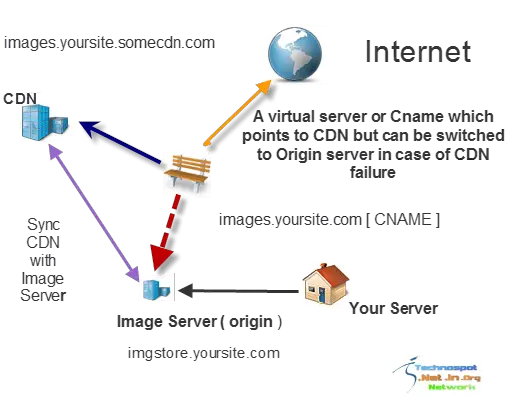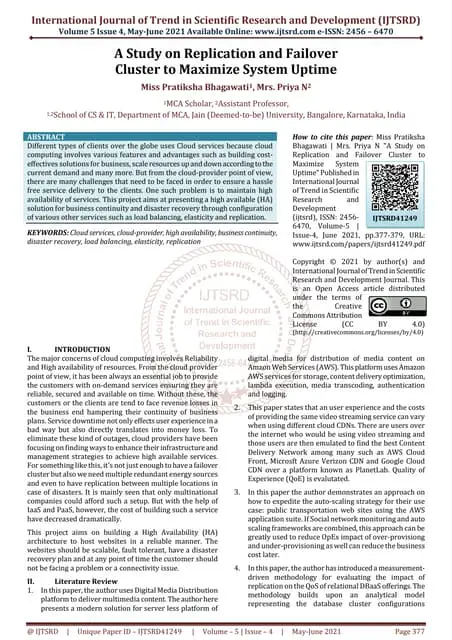CDN Redundancy and Failover Techniques for Maximizing Uptime

Introduction

Content Delivery Networks (CDNs) play a vital role in ensuring the high availability and fast delivery of online content. Redundancy and failover mechanisms are crucial components of CDN architectures to mitigate against single points of failure and maintain uninterrupted service.

CDN Redundancy
Redundancy refers to the duplication of components within a CDN to increase the likelihood that a content request can be fulfilled even if one or more components fail. Common forms of CDN redundancy include:
- Origin Server Redundancy: Multiple origin servers host the same content, so if one server goes down, another can take over.
- Edge Server Redundancy: Edge servers are distributed across multiple geographical locations. If one location experiences an outage, traffic can be routed to edge servers in other locations.
- Network Redundancy: CDNs use multiple network providers to connect edge servers to origin servers. This ensures that if one network path fails, traffic can be redirected through a different path.
Failover Techniques
Failover techniques are mechanisms that automatically switch traffic to a backup component in the event of a component failure. Common failover techniques used in CDNs include:
- DNS Failover: The CDN’s DNS (Domain Name System) records are updated to point to backup edge servers in case of an outage.
- HTTP Failover: Edge servers monitor the health of other edge servers and origin servers. If a component fails, the edge server will redirect traffic to a healthy component.
- IP-based Failover: The CDN’s routing infrastructure uses IP-based rules to dynamically redirect traffic to backup components based on their availability and performance.
Benefits of Redundancy and Failover
- Increased Uptime: Redundancy and failover mechanisms reduce the risk of downtime by providing multiple backups for critical components.
- Improved Performance: By distributing content across multiple edge servers, CDNs can reduce latency and improve user experience, even during peak traffic periods.
- Enhanced Reliability: Failover techniques ensure that traffic is automatically redirected to healthy components, ensuring uninterrupted service in the event of failures.
- Reduced Costs: Redundancy and failover can help reduce the cost of unplanned downtime and lost revenue due to service disruptions.
Implementation Considerations
When implementing CDN redundancy and failover, it is important to consider the following:
- Geographic Dispersion: Redundant components should be distributed across multiple geographical locations to ensure coverage in the event of regional outages.
- Health Monitoring: Continuous monitoring of all components is essential to detect and respond to failures promptly.
- Failover Latency: The time it takes for failover to occur should be minimized to avoid noticeable interruptions to users.
- Cost-Benefit Analysis: CDN redundancy and failover can add cost to the network infrastructure. It is important to weigh the benefits against the additional investment.
Conclusion
CDN redundancy and failover techniques are essential for maximizing uptime and ensuring the reliable delivery of online content. By implementing these mechanisms, organizations can mitigate against single points of failure and provide users with uninterrupted access to their services.## Maximizing Uptime With CDN Redundancy And Failover Techniques
Executive Summary
In today’s fast-paced digital world, website uptime is paramount. CDN redundancy and failover techniques are essential strategies for ensuring maximum uptime and providing a seamless online experience for users.
Introduction
CDN (Content Delivery Network) redundancy involves distributing content across multiple servers in different locations. Failover techniques, on the other hand, provide backup mechanisms to seamlessly switch to alternate servers in case of failure. By implementing both strategies, businesses can significantly enhance their website uptime and reliability.
FAQs
1. What is the difference between CDN redundancy and failover?
CDN redundancy distributes content across multiple servers, while failover involves switching to backup servers when primary servers experience outages.
2. How can CDN redundancy improve website uptime?
CDN redundancy ensures that content is available from multiple locations, reducing the risk of outages due to single server failures.
3. Is failover essential for all websites?
Failover is crucial for websites that require high availability, such as e-commerce platforms and online banking services.
CDN Redundancy
CDN redundancy involves replicating content on multiple servers across diverse geographic locations. This ensures that users can access content from the nearest server, reducing latency and improving performance.
- Reduced latency: Users receive content from the closest server, minimizing loading times.
- Increased bandwidth: Redundant servers provide aggregate bandwidth, handling high traffic volume without disruptions.
- Improved performance: Content is cached on multiple servers, making it instantly available to users.
- Reduced DDoS risks: Redundancy makes websites less vulnerable to DDoS attacks as content is distributed across multiple targets.
Failover Techniques
Failover techniques automatically redirect traffic to backup servers when primary servers fail. This ensures that websites remain accessible even during outages.
- DNS-based failover: DNS (Domain Name System) changes the IP address of the primary server to redirect traffic to the backup server.
- GSLB (Global Server Load Balancing): GSLB analyzes server health and automatically distributes traffic to the nearest available server.
- BGP (Border Gateway Protocol): BGP dynamically routes traffic to the best available server, based on network conditions.
- Health checks: Continuous monitoring of server health triggers failover when a primary server becomes unresponsive.
Load Balancing
Load balancing distributes incoming traffic across multiple servers to prevent overloading and improve website performance.
- Round-robin: Requests are distributed sequentially to each server in the pool.
- Weighted least connections: Servers with fewer active connections receive more traffic.
- Least response time: Traffic is directed to the server with the shortest response time.
- IP hashing: Each client IP address is mapped to a specific server to maintain consistent session affinity.
Performance Monitoring
Continuous monitoring is crucial for detecting potential outages and ensuring proactive maintenance.
- Website uptime monitoring: Regular checks to ensure the website is accessible and responsive.
- Server health monitoring: Tracking server metrics such as CPU usage, memory, and disk space.
- Performance metrics: Monitoring metrics like page load time, response time, and error rates.
- Log analysis: Identifying errors and patterns in server or website logs to proactively address issues.
Conclusion
Implementing CDN redundancy and failover techniques is paramount for maximizing website uptime and providing a seamless online experience. By distributing content across multiple servers and ensuring automatic failover mechanisms, businesses can mitigate risks and maintain the availability of their critical online assets. These strategies are essential for websites that demand high levels of performance and reliability, ensuring that users can access content and services without interruption.
Keyword Tags
- CDN Redundancy
- Failover Techniques
- Website Uptime
- Performance Monitoring
- Load Balancing

